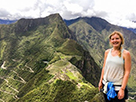The Qhapaq Ñan, or “Royal Road” in Quechua, was one of the most ambitious infrastructure achievements of the Inca Empire. Spanning over 30,000 kilometers, it connected the empire from Quito in the north (modern-day Ecuador) to Santiago in the south (Chile), weaving through Peru, Bolivia, Argentina, and Colombia. This monumental network of roads helped the Incas control one of the largest empires in pre-Columbian America, both politically and culturally.
A Masterpiece of Andean Engineering
The Qhapaq Ñan was more than just a transportation route—it was a symbol of power and unity, designed to allow rapid movement of armies, resources, and information across extremely diverse landscapes. From the rugged peaks of the Andes to coastal deserts and tropical forests, the Incas adapted their construction techniques to build roads that could withstand the harshest conditions.
Stone-paved paths, rope suspension bridges, staircases carved into cliffs, and strategically placed tambos (rest stops) made the Qhapaq Ñan both functional and impressive. Some of these original paths still exist today, and walking them offers a rare glimpse into a world that once pulsed with Inca culture and administration.
Cultural and Spiritual Significance
Beyond its practical use, the Qhapaq Ñan held deep spiritual importance. The Incas viewed the road as a sacred space, linking Cusco, the capital and spiritual heart of the empire, with sacred sites and administrative centers. Ceremonies were often performed along the route, and many sections aligned with astronomical events or sacred geography.
Today, the Qhapaq Ñan is recognized as a UNESCO World Heritage Site, not only for its historical value but also for the communities that continue to preserve its legacy.
Explore the Qhapaq Ñan Today
For modern travelers, walking parts of the Qhapaq Ñan is a journey through history, nature, and living culture. One of the most popular and accessible sections is the Inca Trail to Machu Picchu, a world-renowned trek that follows a portion of the original road to the breathtaking citadel.
Other lesser-known sections are equally impressive and offer a more off-the-beaten-path experience. These include routes in Chachapoyas, Choquequirao, and parts of the Sacred Valley, each revealing a different facet of the Inca Empire and the civilizations that came before.
Book Your Journey with PeruWays
At PeruWays.com, we help you get closer to the magic of the Qhapaq Ñan. Whether you’re looking to book transportation to Cusco, Inca Trail permits, or tickets to Machu Picchu, our platform makes planning your journey simple and reliable.
Don’t miss your chance to walk in the footsteps of the Incas and discover the ancient road that shaped a civilization.
👉 Start your adventure today at www.peruways.com










Comment (0)